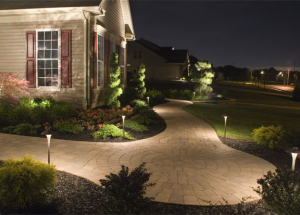Fixtures on photocells serve not so much for street illumination of a personal plot, as one of elements of landscape design. After all, it is not only practical, but also very beautiful - to illuminate various objects in the garden at a time when there is no natural light. In addition to lighting the garden, you can illuminate the house, emphasize its beauty, using attic folding stairs, place photocells under the roof of the building, providing directional lighting from top to bottom. The non-bright and diffuse light of photocells is used by gardeners to mark the location of tracks, plantations, as well as the pool, etc. And, although the photocell can not be called full-fledged lighting, yet consumers are very fond of it for its practicality, economy and attractive appearance.
Content
Photocell - what it is and how it works
A photocell is a modern electronic lighting device that converts photon energy into electricity. That is, it absorbs optical radiation and converts it into an electric current, basing its action on the internal photoelectric effect. This useful, not so long ago appeared in our device, invented in the XIX century Russian scientist Alexander Stoletov. Or rather, it was not his, of course, but that very first photocell, which was based on an external photoelectric effect, which later became the prototype of a modern photocell.
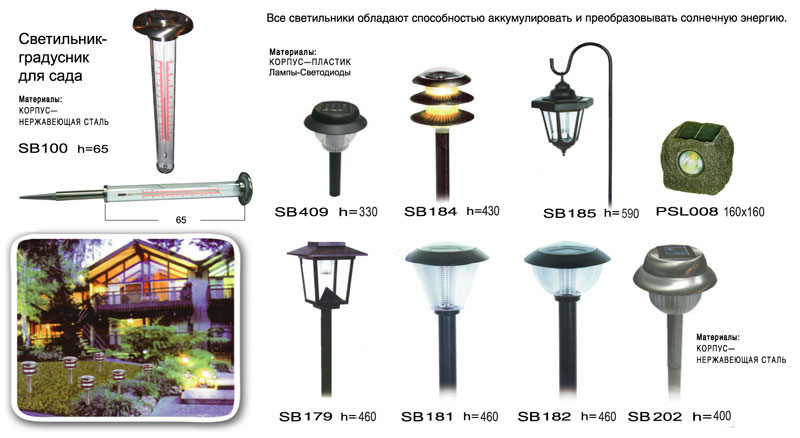
Here we have the principle of working on solar batteries. A thin battery of a small size is glued to the inside of the protective glass plate. In general, everything is quite simple - the photocell control unit for lighting is minimally simple. With the help of this photocell, the microcircuit, if necessary, either switches on or off (at night) the power of the LED, and protects the battery from complete discharge or from another recharge, also increasing the battery voltage several times until it reaches the required value for powering the LED. Usually, in luminaires for a garden-garden there is one LED of increased brightness (white). Color LEDs or a module consisting of several LEDs at once, is rarely used for garden lamps.

In the light fixtures on photocells for the garden, conventional batteries commonly used on the market, nickel-cadmium or nickel-metal hydride (Ni-Cd, Ni-MH) batteries in the form of simple batteries with a voltage of 1.2-3.6 V, type AAA , AA, CP, or SC. If there is no sun for a long time and the photocell does not receive recharging, then the batteries can be removed from the luminaire and charged from the usual charger available in each house. After charging (from solar or from electricity), the battery can work without problems until ten consecutive hours (at night). However, in order for this time to be real, it is necessary to allow sunlight to fall on the battery during the day (in no case should the photocell be in the shade).
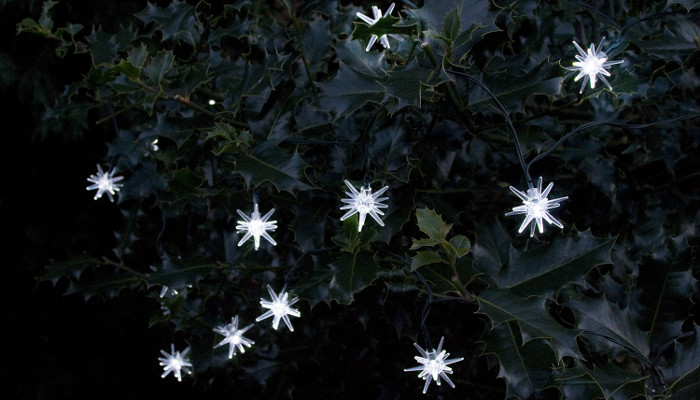
The shelf life of such batteries is one year. After that, they should be replaced with new ones.
With the onset of autumn, sunny days are getting smaller, the intensity of sunlight is shortening, the light day is shortened, so there is a need to remove photocells from the site and put them on winter storage (or dispose of them). Moreover, most of these photocells for the garden plot are not intended for use in the cold below ten degrees with a minus sign. And there is no sense in finding them on the site anymore. They will not shine at night (or they will, but only for a short time). Of the luminaires working on photocells, you should remove the batteries and put them wherever you are in a cool room (you can in the refrigerator on the bottom shelf), pre-charging.
Application of a photocell for outdoor garden lighting
Of course, the photocell serves not only for lighting, but also for beauty. Therefore, manufacturers try to make lamps on photocells (on solar batteries) as diverse as possible in shape and size. On sale you can see the standard "pillars", and lamps in the form of sculptures, animal and bird figures, butterflies, flowers, as well as cartoon characters and fairy tales, etc.
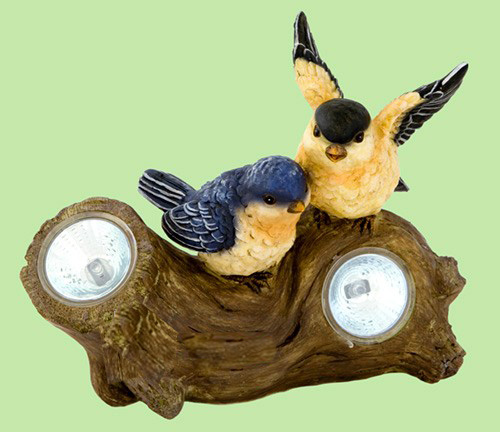
Producers do not stand still. What is in great demand among the population is always improved by the manufacturer. For example, now you can buy fixtures for placing them on the water. Imagine how funny it will look - the floating pond glows soap bubbles.
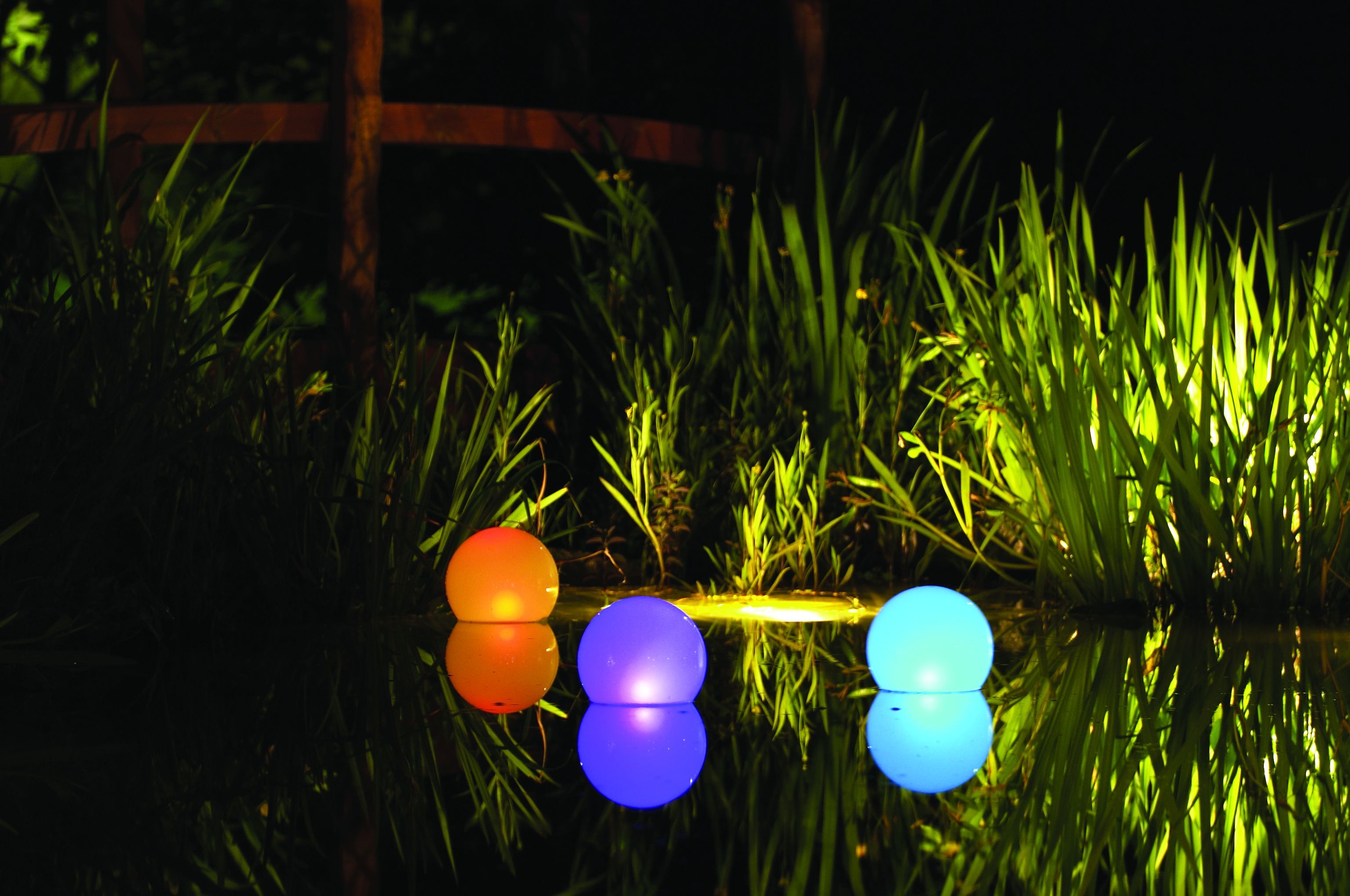
Or here's another - imagine a small pool lined with luminous lilies. Is not it beautiful?
Manufacturers offer a wide variety of luminaires on photocells from polypropylene, plastic and artificial stone, and even from ceramics and metal alloys.
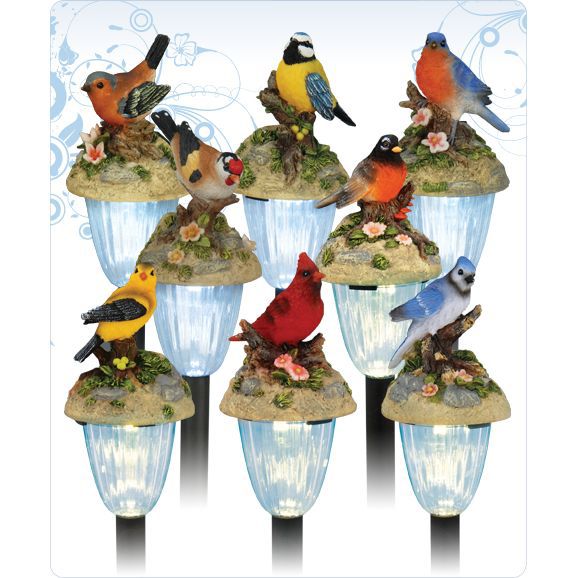
When buying a photocell, be sure to ask what kind of plate it contains-from real or from plexiglas. Glass will last you much longer.
Also in the luminaires on the photocells put motion sensors. It is very convenient - when approaching the dark path in the garden, the photocells are switched on and the light is on. Until you complete it. Then the light goes out. Great! But the sensor of the photocell is also very economical. Batteries are slowly discharged, enough charge for a longer time. Only when buying photocells for the garden must tell the seller about their desires and preferences, so that he could advise the lamp that you need.

How to connect a photocell in the garden
The connection of photocells in the garden area begins, like any other work, from the design. First, make a plan-project lighting the garden area with the help of photocells. Designate for yourself where exactly you want to install them and what exactly are going to light them up. Also take into account the fact that in the daytime the photocell should not be shadowed, otherwise it will not be able to be saturated with solar energy, and it will not be able to fulfill its basic function - garden lighting - at night.

Now get your fixtures out of the package, open them and check to see if you need to remove the gasket between the photocell and the lamp.
Then you just have to install your luminaires on photocells, it will be extremely simple - you can dig them up, either nail (if they are suspended), or simply stick it in and hang it in any place of the garden area.
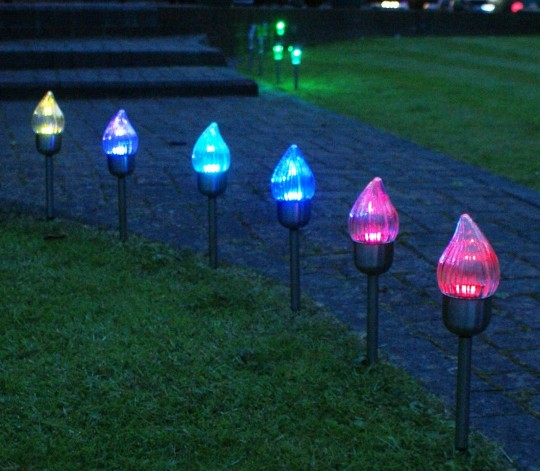
As you can see, the photocell for street lighting to install and connect independently is absolutely no effort for the ordinary consumer. Perhaps, it is this (and also their considerable cost) that are the reason why dishonest people often steal from unserved areas.
For decorative illumination of a garden site fixtures on photocells can be placed near to those objects which you want to allocate. For example, you can highlight the fountain or tracks. You can arrange them around the gazebo or on the stairs. Experiment, and you will certainly get to create your unique and unique design of the garden plot!
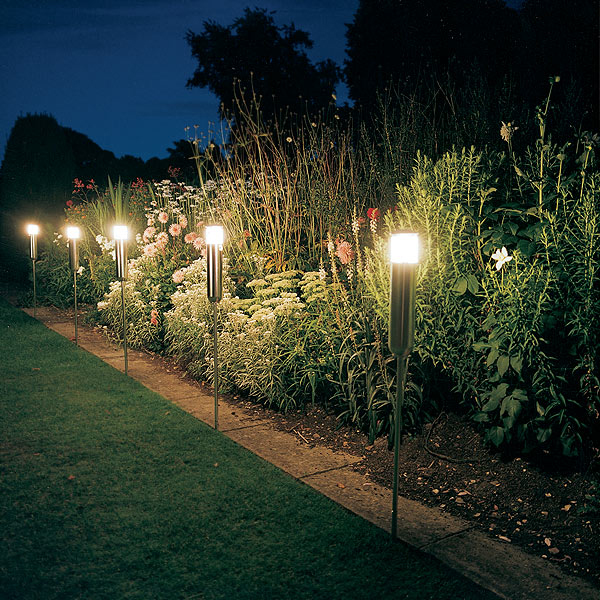
In conclusion, I want to say that the cost of Chinese luminaires on photocells is not very high, and can be only a few euros. However, you do not need to buy cheap. It will be best to choose the high-quality product of European production. True, good fixtures are no longer a few euros, but a few tens, or even hundreds of euros, but they are worth it. The only thing that needs to be solved when buying expensive luminaires on photocells for a summer cottage is the issue of their protection. After all, how easy it is to install such LED lighting fixtures for a garden site, so easily they are later removed by various dishonorable people. Therefore, take care of reliable protection.
Further we suggest you to look through video on a theme of how correctly to connect a photocell for street illumination of a summer residence.


